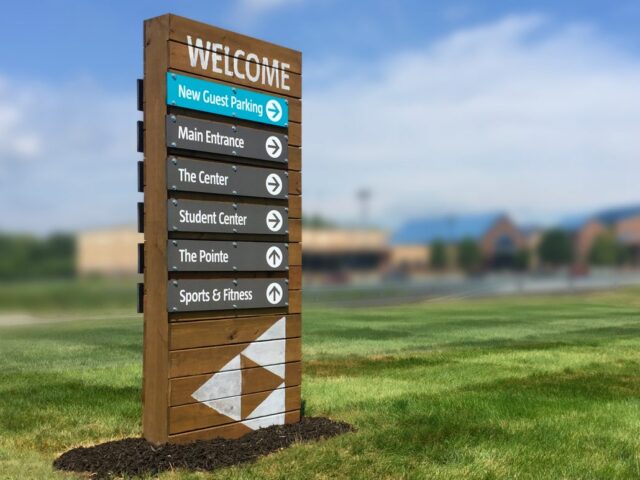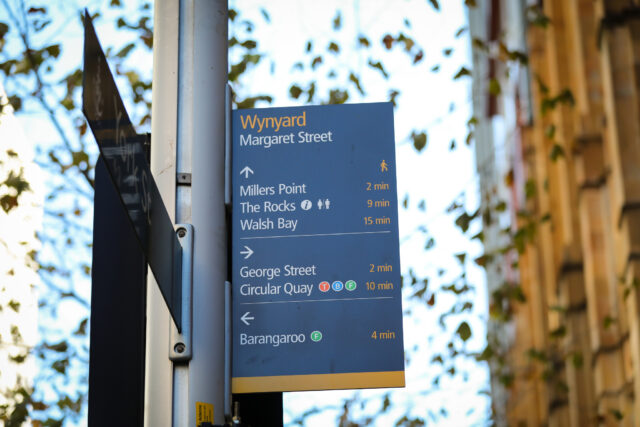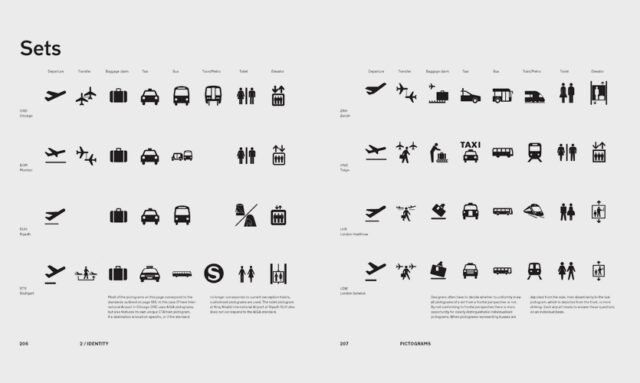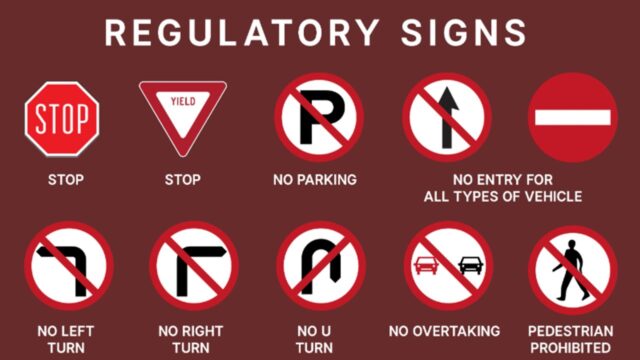
Regardless if you’re running a small business or a large organization, wayfinding signage is crucial in ensuring that your customers or employees can easily navigate around the facility without getting lost or confused. By using wayfinding signage, you can save money and time that would otherwise be spent on explaining directions or hiring staff to do the job.
Wayfinding signage has been in use for several decades and is utilized by various industry sectors. In recent years, many businesses have adopted wayfinding digital signage to modernize their office spaces and enhance the visual appeal of their offline marketing strategies.
Aside from providing navigation assistance, wayfinding signs can also promote your business activities and attract potential customers passing by your store. It is one of the most cost-effective ways to expand your business exponentially.
Are Wayfinding and General Signage Different From Each Other?

If you’re looking for solutions to help your customers navigate your business facility more easily, wayfinding signage may be the answer. Wayfinding signage has been used for decades in various industries, and many businesses are now turning to digital wayfinding signs to modernize their office spaces and improve their offline marketing strategies.
While many people believe that wayfinding and signage are the same things, they are not. Signage is used to convey essential information about a business and assist visitors in navigating an office space. On the other hand, wayfinding signs are limited to a specific area or route of your business. To create effective wayfinding signs, businesses often use universal symbols in metal signs or even digital ones that are easily understood by visitors.
Unlike traditional signage, which is usually stationary and placed in a specific location, wayfinding digital signs can be placed almost anywhere in your business facility. This provides greater flexibility in terms of design and placement, allowing businesses to create visually appealing signs that can also promote their activities and attract the attention of potential customers passing by.
5 Basic Principles of Wayfinding Signs

When it comes to designing wayfinding signage for your business, there are five principles that you should consider for successful offline marketing practices. These principles can help you create clear and concise signage that will help visitors and employees navigate your business facility with ease.
The first principle is to create an identity for a unique location. This involves using unique identity elements such as logos, images, or graphics on your wayfinding signs for different departments or offices in your business facility. This will help visitors easily recognize and remember the wayfinding for each area.
The second principle is to use landmarks to give orientation cues. Landmarks are visual elements that can help organize and define space more effectively. They increase the visuality of a large surrounding area, making it easier for visitors to navigate.
The third principle is to design well-structured paths. This means being clear and specific with the paths and creating a functional digital navigator for your wayfinding signs. Professional signage companies can help you create unique and visually pleasing signage boards that are functional and effective.
The fourth principle is to use different visuals for different regions. By subdividing the space into different regions and using unique and innovative visual attributes for each, visitors and employees can easily find their way around your business facility.
Finally, avoid giving too many navigational choices. Too many choices can create confusion and make your sign structure look unorganized. This principle is beneficial for businesses that want to communicate a story for every navigator to see. By following these five principles, you can design effective wayfinding signage that will enhance the visual appeal of your business facility and help visitors find their way around with ease.
Wayfinding Symbols and Examples

Wayfinding symbols are graphic elements that communicate information about directions and locations within a facility or building. These symbols are important tools for businesses to assist visitors and employees in navigating the space. In this response, we will explore the four different types of wayfinding symbols:
1. Identification Signs
Identification signs are used to inform visitors or employees about the identity of a particular space. They are not intended to provide navigational direction. For example, identification signs are used outside individual offices or conference rooms to indicate the name or number of the space. These signs can also be used in storage areas or warehouse facilities to designate specific areas.
2. Directional Signs
Directional signs provide navigational direction and guide visitors to a particular area within a building. They help to inform visitors about the location of common areas, such as restrooms, meeting rooms, and exits. These signs should be designed with bright, bold colors that are easily visible from a distance.
3. Informational Signs
Informational signs provide information about certain activities or alert visitors of potential dangers or hazards. These signs are essential in industries such as chemical or construction where visitors need to be aware of potential risks. Examples of informational signs include warning signs, alert signs, and construction signs.
4. Regulatory Signs
Regulatory signs inform visitors and employees of rules and regulations in place for specific areas or facilities. They are often used in areas such as parking lots or on streets to inform visitors of speed limits, no parking zones, or other restrictions. These signs can also be used in chemical or construction facilities to indicate areas where personal protective equipment (PPE) is required.

Conclusion
Wayfinding symbols are an essential tool for businesses to help visitors and employees navigate their facilities. Identification signs provide information about the identity of a space, while directional signs provide navigational direction. Informational signs provide alerts and warnings, while regulatory signs inform visitors of rules and regulations. By utilizing these different types of wayfinding symbols, businesses can create an effective wayfinding system that ensures visitors can easily and safely navigate their facility.









